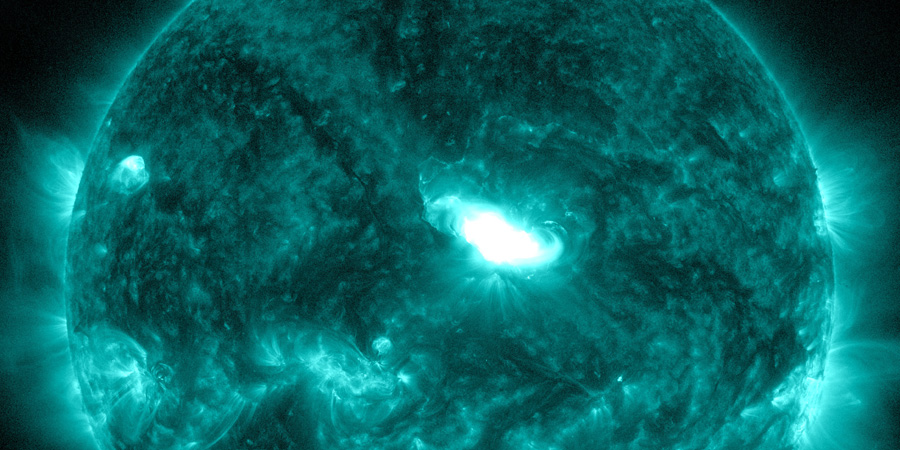Local News
Earth directed solar flare could spawn one of the largest aurora storms of the decade… but will it happen during the day or night?

A large solar flare erupted on the sun Tuesday night, October 8, 2024. While this is not unusual, what makes this flare special is it was on the side of the sun that was almost directly facing earth.
When flares erupt from sun spots on the sun, radiation spews out at millions of miles per hour, and usually just disperses into space, but if the sunspot is facing earth, that radiation enters into the near earth atmosphere, and if conditions are right with the earth’s magnetic field, we have the potential for northern lights. The stronger the flare, or more earth directed the flare is, the more intense the aurora is and the farther south the aurora can be visible.
Tuesday night’s flare taps into both of these parameters. It was a large flare and earth directed.
Scientists classify solar flares according to their X-ray brightness. Flares classes have names: A, B, C, M, and X, with A being the smallest and X being the largest. Each category has nine subdivisions ranging from, 1 to 9. I.E. M3 or X5. Each letter is 10 times more powerful than the previous letter so an M flare is 10 times stronger than a C flare. As and Bs have almost no effect on earth as far as auroras are concerned. Stronger C flares, if earth directed, can have a weak aurora low on the horizon in our latitude. M class flares bring the chance of auroras higher and X class flares, in the right conditions, will almost guarantee auroras to some degree, fairly high in the sky.
One doesn’t have to look too far back to find the last X class flare to affect earth. It occurred Thursday morning, October 3, and the energy from that flare caused auroras on Monday night. While that flare was an X9 flare, stronger than last night’s X1.8, the sunspot wasn’t directly aimed at earth, therefore the energy just glanced by us.

Space weather forecasters issue aurora storm watches on a scale of 1-5. We have been placed under a G4 watch. To put this into perspective, this is only the 5th G4 watch this solar cycle which lasts 11 years. The last G4 watch, in May of this year, ended up being a G5 storm. The first since 2003.
Now all of this is fine and dandy, but the problem comes in the timing of the energy from the sun. As of now, space forecasters are thinking the initial impact to earth’s atmosphere will be during the daylight hours, Thursday, October 10, but there is hope that the “cloud” of radiation will be trailing slightly behind this initial blow and will last into the darker hours of the night.
Unlike weather systems here on earth, where we can monitor them as they pass along the ground, once this energy leaves the sun, 93 million miles away, we are without knowing it’s characteristics until it hits one of our satellites a mere one million miles away. At that point its just a couple minutes before the energy reaches earth.
Stay tuned to KFIZ’s Facebook page for updates tomorrow night IF auroras are visible. Our News Director Doug Raflik will be closely monitoring the situation and will post if the lights are out. If you are thinking of going out to look, you will want to get a few miles out of the city, and look north. Allow your eyes to adjust to the darkness. You will have a hard time seeing anything if you are looking at your phone and then try to see them.


